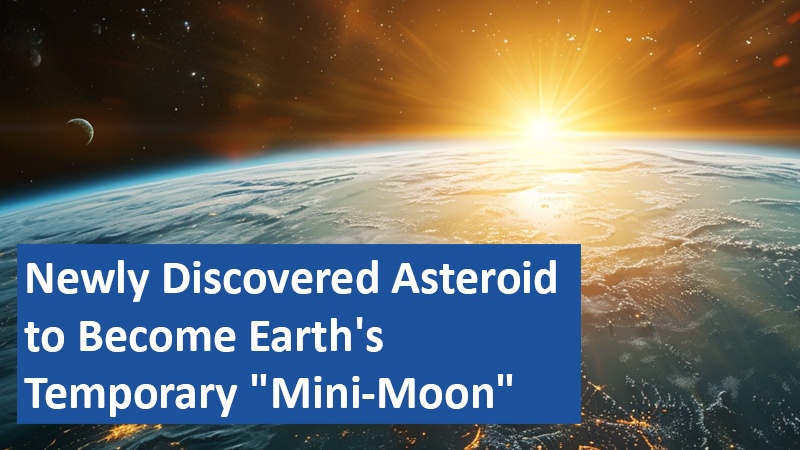A recently discovered asteroid, named 2024 PT5, will temporarily orbit Earth as a “mini-moon” for nearly two months starting September 29. This rare event offers scientists a chance to study how smaller celestial objects interact with Earth’s gravity. Although not visible to the naked eye, the phenomenon raises intriguing questions about the nature of these short-lived moons.
By Sadie Watkins
What Exactly Are Mini-Moons?

Mini-moons occur when small celestial bodies, such as asteroids or space debris, are captured by Earth’s gravity and briefly orbit the planet. These temporary moons can sometimes complete a full revolution before continuing their journey through space. To qualify as a mini-moon, the object must approach Earth within about 2.8 million miles and maintain a speed of approximately 2,200 mph to stay in orbit for a period of time. These occurrences are rare and often short-lived.
2024 PT5: A New Mini-Moon in Earth’s Orbit
Starting from September 29 until November 25, 2024 PT5 will circle Earth before moving on. Discovered on August 7 by the Asteroid Terrestrial-impact Last Alert System in South Africa, this asteroid is classified as an Arjuna asteroid, known for having orbits that are similar to Earth’s. Unlike some mini-moons that stay for years, 2024 PT5 will be in Earth’s orbit for only a couple of months, allowing scientists limited time to study its behavior.
Will We Be Able to See This Mini-Moon?
Despite having two moons in orbit for nearly two months, 2024 PT5 will be too small and dim to be seen with the naked eye. Its size and brightness make it invisible to most amateur telescopes as well. According to experts, only large, professional telescopes—those with a diameter of at least 30 inches, paired with special detectors—will be able to capture images of this temporary moon.
Previous Mini-Moon Events
This isn’t the first time Earth has had a mini-moon. Similar events were recorded in 1981 and 2022, with durations varying from a few days to several months. In some cases, the mini-moon completes a full orbit, while in others, it leaves Earth’s gravitational pull before finishing a complete revolution. These occurrences provide valuable insights into how smaller celestial objects interact with Earth’s gravitational field.
The discovery of 2024 PT5 highlights the complexity of our planet’s interactions with smaller objects in space. While its time in orbit is brief, this mini-moon offers scientists a unique opportunity to further explore these rare celestial events.
Based on information from www.eu-usatoday.com and own research.